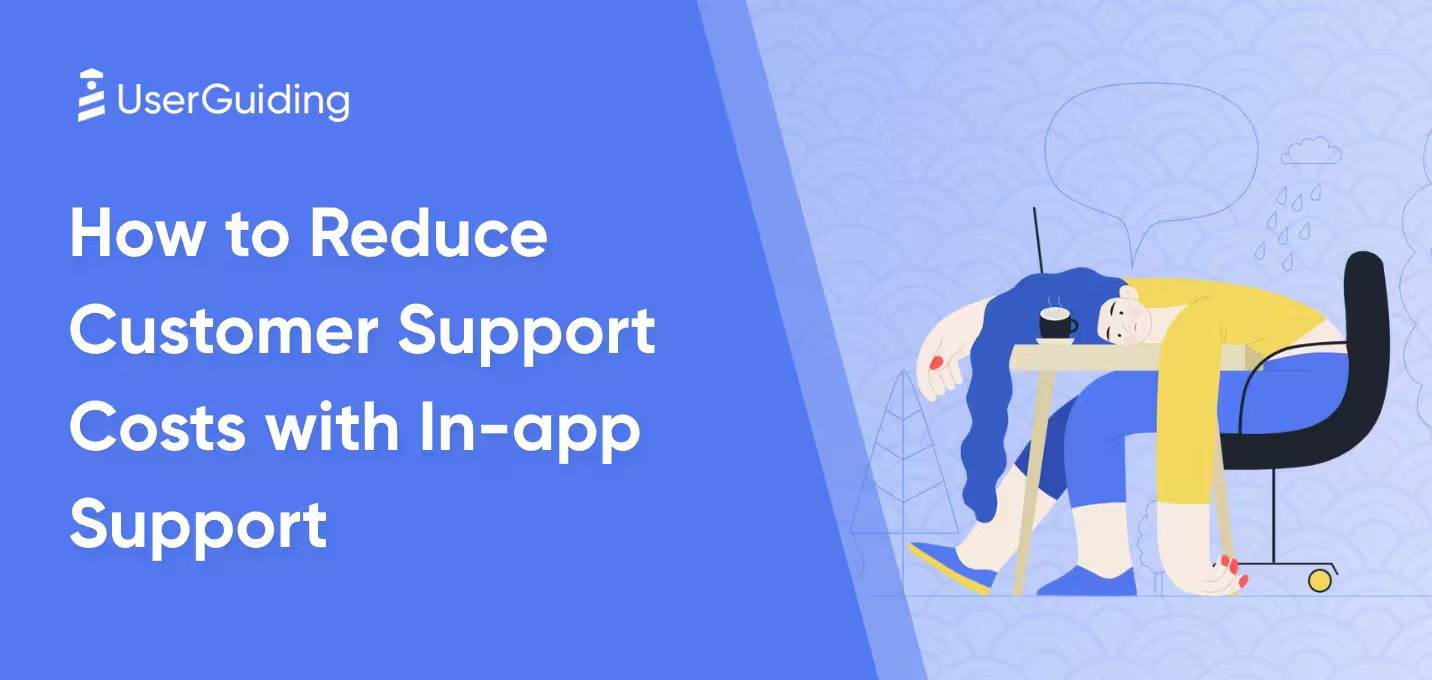

Have you ever struggled with a clunky app that made you want to throw your device out the window?
You’re not alone!
In the SaaS world, delivering a stellar user experience (UX) is vital for keeping users engaged and satisfied.
In fact, a good UX design can boost website conversion rates by 400%.
A smooth onboarding process, intuitive navigation, and responsive support can turn first-time users into loyal advocates.
In this article, we’ll
- dive into what makes UX in SaaS so important,
- explore effective ways to measure it and
- share best practices that can elevate your application to new heights.
Let’s unlock the secrets to creating an experience that users will love!
TL;DR
- User experience in SaaS focuses on positive interactions with cloud applications through intuitive navigation, smooth onboarding, fast performance, and accessibility.
- Key elements of user experience include customization options, and easy access to support and enhance user satisfaction.
- You can choose qualitative or quantitative methods for measurement, such as user interviews, focus groups, surveys, and analytics tools.
- To get the most out of your user experience system, try developing personas, conducting contextual onboarding, and using journey mapping.
- The most important metrics to track for user experience are Net Promoter Score (NPS), Customer Satisfaction Score (CSAT), and conversion rate.
What is the user experience for SaaS?
User experience (UX) in Software as a Service (SaaS) is all about how users connect with a cloud-based application in a way that feels natural and enjoyable.
It’s really important to have easy navigation and a welcoming onboarding process that helps new users get started without any hassle.
You also want to ensure fast performance and reliable uptime so everyone can depend on the service.

8 Effective Methods to Measure User Experience
Now, let’s dive into 8 different methods that you can try today to measure your users’ experience!
I’ve divided the list into qualitative and quantitative methods for clarity, so you can easily navigate between the sections.
Qualitative Methods
What? Qualitative methods focus on understanding the reasons, opinions, and motivations behind user behaviors.
Unlike quantitative approaches that rely on numbers and stats, qualitative methods dive deeper into user perspectives through techniques like interviews, focus groups, and usability testing.
Why? These methods help gather valuable insights into how users interact with products, their emotional reactions, and the context of their experiences.
1. User Interviews
User interviews are one-on-one conversations with users that gather insights about their experiences, needs, and feelings regarding your product or service.
They offer a lot of flexibility in terms of how you can conduct them. You can schedule interviews face-to-face or online by calling the users or sending your interview questions via email.
There are two main types of interviews: structured and unstructured.
Structured interviews use a set list of questions to keep things consistent across different sessions, while unstructured interviews take a more conversational approach, giving you the freedom to explore topics in-depth as they come up.
When conducting these interviews, it’s important to ask about user pain points, motivations, and their overall satisfaction with the product or service.
Here are some examples to get you started:
- "What are your primary goals when using this product?"
- "What challenges or frustrations have you experienced while using this product?"
- "Can you recall a time when you found a feature particularly confusing?"
- "What aspects of the product make you feel satisfied or frustrated?"
- "If you could change one thing about the product, what would it be?"
How to do it?
Begin with simple, open-ended questions to build ease into the conversation.
Pay close attention to what the user is saying. Nod, maintain eye contact, and provide verbal affirmations to show you’re engaged if you’re doing a synchronous interview.
Use prompts like "Can you tell me more about that?" to encourage the user to elaborate on their thoughts.
Frame questions neutrally to avoid biasing the user's responses. Instead of asking, "Did you find that feature helpful?" ask, "What was your experience with that feature?"
Document the conversation for accuracy. Recording can help capture nuances that might be missed in notes.
And finally, if a user mentions something intriguing, don’t hesitate to dig deeper to explore their thoughts further.
Noticing these cues might be harder if you’re doing an asynchronous interview via email or a survey, so keep that in mind when designing your interview.
2. Focus Groups
Focus groups gather diverse users to discuss their thoughts about a product or service.
A key benefit is the dynamic interaction among participants, which can reveal insights that might not surface in one-on-one interviews.
How to do it?
To run effective focus groups, it’s important to create a comfortable atmosphere and establish clear ground rules that promote respectful dialogue.
To really make the most of this method, consider scheduling either a face-to-face meeting or a video conference.
The facilitator should guide the discussion with open-ended questions, encouraging everyone to share their thoughts.
It's equally important to manage dominant voices so everyone has a chance to contribute.
That said, focus groups do come with their own challenges.
Group dynamics can sometimes make it hard for individuals to express themselves fully, and some participants may feel pressured to go along with the majority.
Time constraints can limit deeper discussions, and analyzing the qualitative data can be a bit tricky.
Being aware of these challenges can help you navigate them more effectively.
3. Usability Testing
Usability testing helps you observe how real users interact with a product or service. This process helps you spot usability issues and understand user behavior more deeply.
There are two main types of usability testing: moderated and unmoderated.
In moderated testing, a facilitator guides participants in real-time, allowing for immediate feedback.
Unmoderated testing, on the other hand, lets users complete tasks independently, usually tracked by software. While unmoderated tests can be more scalable, they might miss some of the finer details.
It’s helpful to track key metrics like task success rate (how many tasks users complete successfully), time on task (how long it takes to finish tasks), and error rate (how often mistakes occur).
Additionally, you can gauge user satisfaction through follow-up surveys, providing further insights into their experience.
How to do it?
Here you can watch a Guerilla usability testing by Google in a café:
Quantitative Methods
What? Quantitative methods involve gathering and analyzing numerical data to measure user experience, giving you a statistical perspective on user interactions.
Why? Unlike qualitative methods, which focus on descriptive insights, quantitative approaches enable you to measure experiences across larger groups of users.
Common techniques include surveys, A/B testing, and analytics, which help you track important metrics like user satisfaction scores, task completion rates, and engagement levels.
4. Surveys and Questionnaires
Surveys and questionnaires help you gather structured feedback on how users interact with your services or products.
How to do it?
To create effective questionnaires, it’s important to keep them clear and concise.
A good mix of closed-ended questions (like multiple-choice) and open-ended questions can give you a balanced perspective.
It’s best to avoid leading questions that might bias the responses.
If you decide to conduct a survey, you can choose between online and paper formats.
Online surveys tend to be more flexible and easier to analyze, while paper surveys can be a great option in places with limited digital access.
Each method has its benefits, but online formats often have a broader reach. So, consider what will work best for your audience.

You’ve completed your survey or questionnaire, and now it’s time to run the numbers and get the results.
But first, you should focus on organizing responses, calculating key metrics (like average satisfaction scores), and identifying trends.
If that sounds overwhelming, visualization tools are your friend! They can help present these insights clearly.
5. Analytics Tools
Analytics tools are tools that offer insights into how users interact with products.
How to do it?
For instance, web analytics tools like Google Analytics can track important metrics such as page views, bounce rates, and average session duration, helping you understand user engagement better.
On the other hand, mobile analytics focuses on how users interact with apps, capturing data like usage frequency, user retention, and in-app behaviors.
This information is crucial for optimizing the mobile experience.
When using these tools, it’s important to monitor key metrics like conversion rates (the percentage of users completing desired actions), user engagement (how actively users interact with your content), and retention rates (how many users come back).
6. A/B Testing
A/B testing is a method where you compare different versions of a product or feature to see which one performs better.
How to do it?
To set up A/B tests, create two or more variations of a webpage, app feature, or design element, and randomly assign users to each version.
Track their interactions to determine which version yields better results, such as higher engagement or conversions.
After the test, analyzing the results is crucial.
Focus on key metrics like conversion rates and user feedback, ensuring the sample size is large enough for statistically significant insights.
HubSpot Academy tested 3 different variants to primarily test their conversion rate. They also looked at the call to action (CTA) clicks and engagement.
Here are the variants:



By the end of their test, HubSpot Academy found out that choosing variant B could bring in around 375 more sign-ups each month for them.
Combining Qualitative and Quantitative Methods
7. Triangulation: Using multiple methods to confirm findings.
Triangulation is a helpful approach that uses multiple methods to confirm your findings.
How to do it?
For example, if usability testing shows that users are having trouble with a specific feature, follow-up surveys can help confirm whether others feel the same way, while analytics might reveal a drop in engagement linked to that feature.
This cross-referencing allows you to identify patterns and make more informed design decisions.
By combining different methods, you can reduce biases and limitations that might come from relying on just one approach, ultimately leading to deeper insights.
8. Mixed Methods Research: Integrating qualitative and quantitative data.
Mixed methods research captures the depth of user feedback while also quantifying trends.
How to do it?
For instance, qualitative methods like interviews can reveal users' motivations and frustrations, giving insight into the "why" behind their behaviors.
Meanwhile, quantitative methods, such as surveys and analytics, provide numerical data that show how widespread those behaviors are.
By using mixed methods, your teams can validate findings and cross-reference insights.
If interviews highlight a common issue, a follow-up survey can gauge how many users share that experience.
This approach enhances the reliability of the research and supports informed decision-making.
6 Best Practices for Measuring User Experience
Here’s a list of best practices for measuring user experience:
1. Create User Personas: Develop detailed user personas that represent different segments of your audience. This helps tailor your measurement strategies to better meet specific user needs and behaviors.
2. Prioritize User-Centric Design: Adopt a user-centered design approach from the outset, ensuring that all measurement strategies focus on user needs and pain points.
3. Conduct Contextual Inquiry: You can observe users in their natural environment as they interact with your product. This approach provides insights into how context influences user behavior and experience.
4. Use Journey Mapping: Create user journey maps to visualize the entire user experience, from initial contact to post-purchase interactions. This helps identify touchpoints that may need improvement.
5. Establish a User Advisory Group: You can create a group of users who can provide ongoing feedback and insights. This group can be involved in testing new features, providing ideas for improvements, and sharing their experiences.
6. Utilize Heatmaps: Try implementing heatmaps to visualize user interactions on your site. These tools can reveal where users click, scroll, or spend time, helping identify areas of interest or confusion.
10 Key UX Metrics to Track
Explain briefly and link to the related pages. You can keep the bullet format.
User Satisfaction
- Net Promoter Score (NPS): Net Promoter Score (NPS) is a popular metric for gauging user satisfaction and loyalty.
- Based on their responses, users are categorized into three groups: promoters, passives, and detractors.

- Customer Satisfaction (CSAT) Score: Customer Satisfaction (CSAT) Score is a key metric that measures how satisfied users are with a product or service. Responses are collected on a scale, often from 1 (very dissatisfied) to 5 (very satisfied).

Usability
- Task Completion Rate: Task completion rate measures the percentage of users who successfully complete a specific task within a product.
- A high task completion rate indicates effective navigation and user satisfaction, while a low rate suggests usability issues.
- A high task completion rate indicates effective navigation and user satisfaction, while a low rate suggests usability issues.
- Time on Task: Time on task measures the amount of time users take to complete a specific task within a product or system.
- A shorter time on task generally indicates that users can navigate the product quickly and easily, while a longer duration may suggest confusion or difficulty in completing the task.
- Error Rate: Error rate calculates the frequency of errors users make while attempting to complete a specific task within a product or system.
- A high error rate indicates that users are struggling with the interface or task instructions, suggesting potential usability issues that need addressing.
Engagement
- Page Views: Page views measure the total number of times a specific webpage is viewed by users.
- High page views can indicate that users find the content appealing or relevant, suggesting effective engagement strategies.
- However, if users frequently return to the same page, it may also signal confusion or difficulty in navigating the site.
- Time on Site: Time on site measures the total time users spend on a website during a single visit.
- High time on site is a positive sign of engagement, while low durations may indicate users aren’t finding what they need.
- Bounce Rate: Bounce rate measures the percentage of visitors who leave a website after viewing just one page, without engaging further.
- A high bounce rate often suggests that users don’t find the content relevant or compelling, indicating potential engagement issues.
Conversion
- Conversion Rate: Conversion rate measures the percentage of website visitors who complete a desired action, such as making a purchase or signing up for a service.
- A higher conversion rate indicates effective user engagement and successful marketing strategies, while a low rate may suggest obstacles in the user journey.
- A higher conversion rate indicates effective user engagement and successful marketing strategies, while a low rate may suggest obstacles in the user journey.
- Customer Acquisition Cost (CAC): Customer Acquisition Cost (CAC) measures the total cost of acquiring a new customer, including expenses related to marketing, sales, and advertising.
- A lower CAC indicates efficient conversion strategies, while a high CAC may signal inefficiencies in marketing or sales.
Key Takeaways
User experience (UX) in Software as a Service (SaaS) focuses on creating positive interactions with cloud applications.
Key elements include easy navigation, smooth onboarding, fast performance, and accessibility, along with clear feedback and customization options.
To measure UX effectively, it’s helpful to combine qualitative methods like user interviews with quantitative approaches like surveys and analytics.
Best practices include developing user personas and using journey mapping to really understand user experiences.
By tracking metrics such as Net Promoter Score (NPS), Customer Satisfaction Score (CSAT), and conversion rate, you’ll gain valuable insights into user satisfaction and retention.
Ready to enhance your user experience?
👉🏻Try UserGuiding for free and see how it can help you create smoother, more engaging interactions for your users!👈🏻
Frequently Asked Questions
What is user experience (UX) in SaaS?
User experience (UX) in Software as a Service (SaaS) refers to how users interact with and perceive cloud-based applications. It encompasses all aspects of the user's journey, including navigation, onboarding, performance, and accessibility.
Why is UX important for SaaS applications?
A strong UX is crucial for retaining users, boosting satisfaction, and encouraging loyalty. In a competitive market, a positive experience can differentiate your application and drive long-term success.
How can I measure user experience effectively?
To measure UX, combine qualitative methods (like user interviews and focus groups) with quantitative methods (such as surveys and analytics). This approach provides a comprehensive understanding of user behavior and satisfaction.

















.svg)
.svg)
.svg)
.svg)
.svg)

.svg)
.svg)












.svg)
.svg)




.png)















